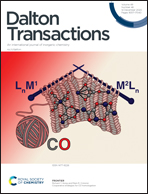Retention of anions in cobalt hydroxide with Ni substitution to emphasize the role of anions and cations for high current density in oxygen evolution reactions†
Abstract
Herein, we report the fabrication of remarkably fine nickel-substituted α-Co(OH)2 sheets using an ingenious co-precipitation method at a lower pH value. An α-CoNiOOH sheet retains the parent α-Co(OH)2 structure consisting of both tetrahedral (Td) and octahedral (Oh) sites with the retention of interlayer chloride ions, which is in contrast to the previous reports. The as-synthesized α-CoNiOOH sheet exhibits excellent oxygen evolution reactions (OERs) and produces a current of 10 mA cm−2 at an overpotential of merely 190 mV in an alkaline environment. Moreover, the α-CoNiOOH sheet attains an exceptionally high current density of 100 mA cm−2 at a low overpotential of only 270 mV. Additionally, this electrocatalyst possesses a 33 mV dec−1 Tafel slope with higher values of TOF (11 s−1) and double-layer capacitance (7.76 mF cm−2). This enhancement is attributed partially to the substitution of Ni during the conversion of α-Co(OH)2 to α-CoNiOOH and partially to the exceptionally thin sheets allowing potential octahedral sites for improved oxygen evolution reactions.



 Please wait while we load your content...
Please wait while we load your content...